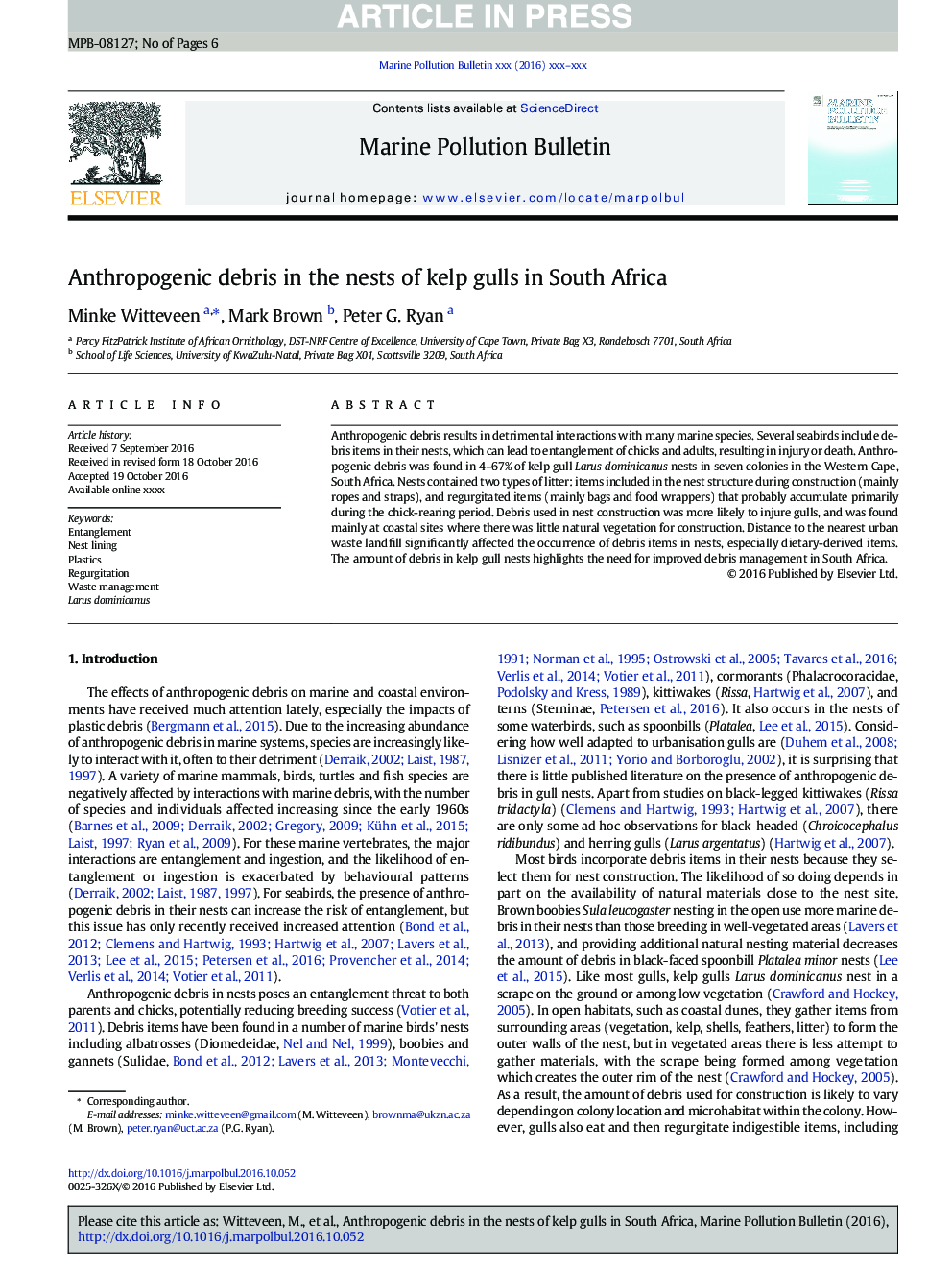| Article ID | Journal | Published Year | Pages | File Type |
|---|---|---|---|---|
| 5757703 | Marine Pollution Bulletin | 2017 | 6 Pages |
Abstract
Anthropogenic debris results in detrimental interactions with many marine species. Several seabirds include debris items in their nests, which can lead to entanglement of chicks and adults, resulting in injury or death. Anthropogenic debris was found in 4-67% of kelp gull Larus dominicanus nests in seven colonies in the Western Cape, South Africa. Nests contained two types of litter: items included in the nest structure during construction (mainly ropes and straps), and regurgitated items (mainly bags and food wrappers) that probably accumulate primarily during the chick-rearing period. Debris used in nest construction was more likely to injure gulls, and was found mainly at coastal sites where there was little natural vegetation for construction. Distance to the nearest urban waste landfill significantly affected the occurrence of debris items in nests, especially dietary-derived items. The amount of debris in kelp gull nests highlights the need for improved debris management in South Africa.
Related Topics
Physical Sciences and Engineering
Earth and Planetary Sciences
Oceanography
Authors
Minke Witteveen, Mark Brown, Peter G. Ryan,
